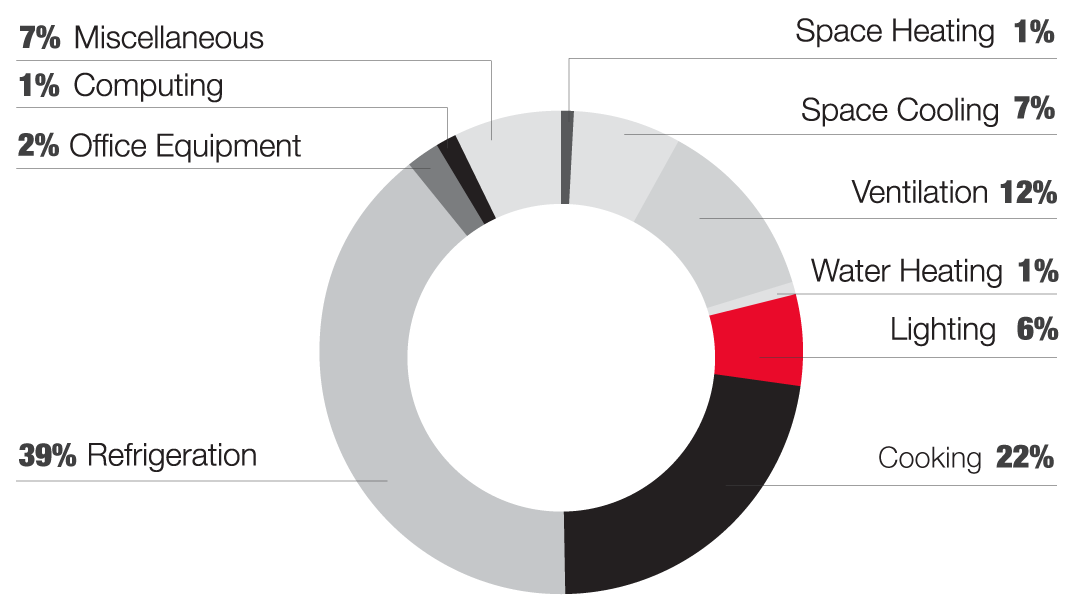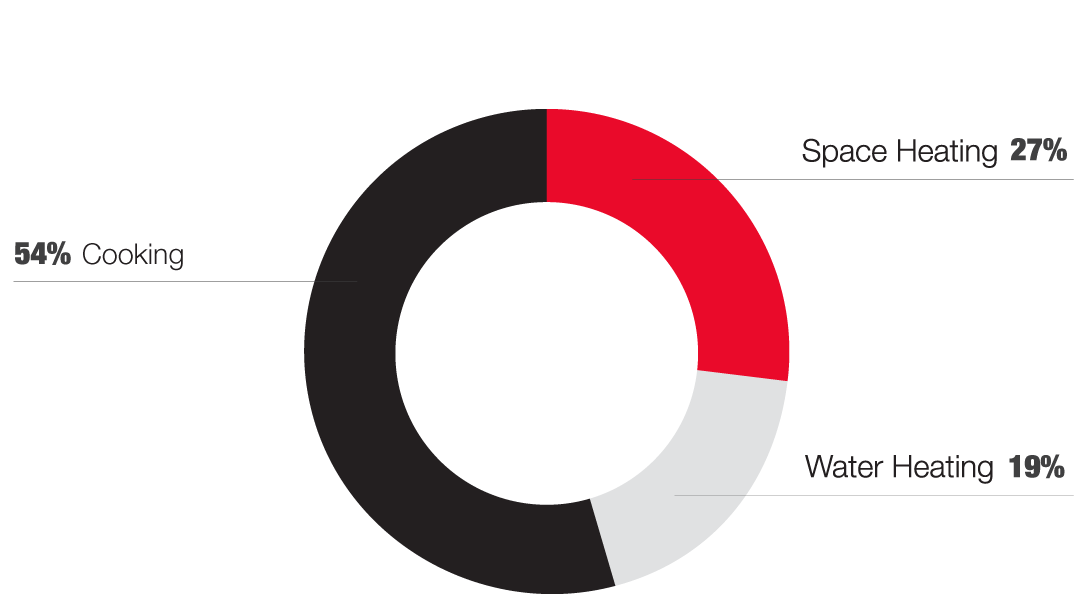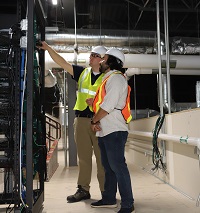Take a bite out of your energy costs
Did you know the average restaurant in the Midwest spends nearly $17,000 per year on electricity and natural gas? Bundling upgrades and saving on improvements is easier than ever with the Small Business Express program, which connects you with qualified contractors and rebates to create lasting energy efficiency savings for your restaurant.
What uses the most energy in restaurants
The following pie charts illustrate what restaurant activities use the most energy and cost the most. Cooking and refrigeration account for a large fraction of energy use in restaurants. Electricity end uses include (from the top, counterclockwise): 7% miscellaneous, 1% computing, 2% office equipment, 39% refrigeration, 22% cooking, 6% lighting, 1% water heating, 12% ventilation, 7% space cooling and 1% space heating. Natural gas end uses include (from the top, counterclockwise): 54% cooking, 19% water heating and 27% space heating.
Electricity End Uses

Natural Gas End Uses

What's costing restaurants the most
| End Uses | Average Electric Cost/Month | Average Gas Cost/Month | Energy Savings Potential |
|---|---|---|---|
| Cooking | $231 | $176 |
Moderate
|
| Refrigeration | $410 | - |
High
|
| Space Heating, Cooling and Ventilation | $210 | $88 |
Moderate
|
| Water Heating | $11 | $62 |
Low
|
| Lighting | $63 | - |
Moderate
|
Small Business Express is here to lend a hand
Small Business Express makes it easy for you to get professional guidance to identify energy-saving opportunities. Eligible rebates can help lower your out-of-pocket cost to replace failing equipment, and help you save energy and money long term.
Ways to Save

Cooking equipment is the second largest energy user within restaurants. The average restaurant will spend $407 per month in total cooking costs alone! There are a variety of methods to lower this cost.
- Simple: Turn cooking equipment off during idle time.
- Low cost: Ensure all equipment is maintained and functioning properly. Install electric igniters on gas stoves.
- Capital investment: Upgrade to ENERGY STAR certified equipment, such as ENERGY STAR ovens, fryers, steamers, hot food holding cabinets, rice cookers and hoods.

A typical restaurant’s refrigeration equipment is its largest energy user, costing $410 per month on average. The tips and recommendations below can help you save almost a third of this cost.
- Simple: Check and replace seals around walk-in coolers and freezers.
- Low cost: Service your refrigeration equipment every two years.
- Capital investment: Upgrade old reciprocating compressors to high-efficiency, variable-speed scroll compressors. Upgrade to ENERGY STAR reach-in refrigerators and freezers.

Heating and cooling equipment is one of the top three energy users in a restaurant. Temperature control for both the kitchen and dining areas is important for comfort but uses significant energy.
- Simple: Seal around windows and doors with new caulk and weather stripping every few years.
- Low cost: Service equipment and change filters regularly. Install motion sensors to turn off range hood fans when not in use, and ensure the fans are positioned properly above the cooking equipment.
- Capital investment: Replace older systems, such as air conditioners, furnaces and boilers, with high-efficiency models and add insulation.

Cooking and cleaning require a lot of hot water, which is why even a simple change in the water heater temperature can reap large benefits – each 10°F reduction in water heater temperature can save 3-5% in water heating costs.
- Simple: Lower your water heater temperature to 120°F and install low flow faucet aerators and pre-rinse spray valves.
- Low cost: Install a water heater jacket on tank-type water heaters and add pipe insulation to all accessible hot water piping.
- Capital investment: Replace older water heaters with high-efficiency models; tankless water heaters save even more by reducing stand-by heat loss. Replace dishwashers with ENERGY STAR certified models.

Changing lighting does not have to impact ambience or lighting quality; LEDs are available in dimmable options. A simple switch from incandescent lights to LEDs can reduce your monthly lighting costs from $63 to $16!
- Simple: Turn lights off when a space is not in use.
- Low cost: Replace incandescent and fluorescent bulbs with LED bulbs. Install motion sensors in restrooms or other less used rooms to turn off lights automatically.
- Capital investment: Replace existing lighting fixtures such as fluorescent and high-intensity discharge with LED fixtures.

See how your restaurant compares
Energy Use Intensity (EUI) is a common measure used to benchmark a building’s energy use as a factor of its size. To calculate EUI for your restaurant, total your electric bills for one year, then divide by your building’s square footage; repeat for natural gas. If the score is lower than those listed below, you are using less energy than most.
|
Average EUI for Restaurants in the Midwest
|
|
|---|---|
|
Electricity
|
Natural Gas
|
|
43.0 kWh/square foot
|
1.67 therms/square foot
|
Call us today at 800-432-8583 to learn about tools that can help you with benchmarking your facility.
Other Resources